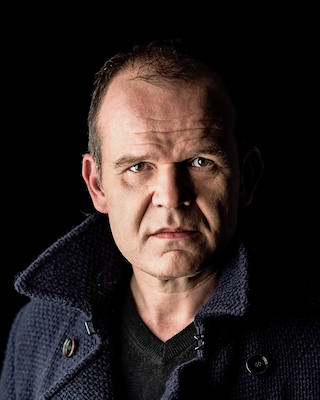Wolfgang Amadeus Mozart (1756–1791)
Symphony No. 41 in C major, KV 551 “Jupiter”
François-Xavier Roth & Gürzenich-Orchester Köln
About the Performance
The historically informed or “period” performance movement has been gathering steam for many years, especially in Europe. This recent performance of Mozart’s Jupiter Symphony illustrates how one orchestra in Germany has been influenced by these ideas.
Robert Howe writes:
The well-known French conductor François-Xavier Roth became maestro of this orchestra in 2015. Monsieur Roth is here conducting a hybrid performance, using modern players and techniques but applying period performance practices.
The anachronisms in this performance are legion. The hall is much bigger than an 18th-century concert venue. The orchestra is on the large side for a Mozart symphony, with strings 10-7-6-6-5. An 18th-century ensemble of this size would double the woodwind parts to match the strings. The greater carrying power of modern woodwinds, who are heard very clearly here, is evident. The players include about 50% women, none of whom would have been in an 18th century orchestra.
The second violins are placed opposite the firsts, a typical Baroque or Classical setup which emphasizes contrapuntal independence. One is puzzled that Roth did not ask for another desk of seconds to balance the firsts. The seconds always suffer when placed stage left, as their sound holes face inwards. Perhaps this was not relevant in the round hall used here. The woodwinds and especially the brasses are raised above and rather far behind the strings. Given the excellence of the players, this is an advantage as the players can hear themselves more clearly.
The gold Boehm flute, wooden Conservatoire oboe, Lucite Conservatoire oboe, and a pair of German bassoons are typical modern instruments, even allowing for the unusual second oboe. The horns are modern double horns. However, a few period elements are present here. The trumpets are playing on valve-less ceremonial trumpets, just as Mozart’s players would have. The tympanist uses a single pair of wooden sticks, again in emulation of the 18th century. Tympanists through the early 20th century sought to stand out from the ensemble, rather than to blend in with it as modern players do. Modern players use cloth-wrapped sticks, which provide a softer, more blended sound. Even the conductor attempts to use a period practice, eschewing a baton for the use of his hands and eyes.
The strings play here with minimal vibrato. There is much use of the open strings, this is heard easily in the second phrase of the piece. However, oboes and bassoons uniformly single-tongue, not using the “tu-ru” articulation that Mozart’s players would have employed for fast paired notes; few modern reed players have learned this articulation. The flutist does articulate this way, but that is a feature of modern flute playing. Violins are muted in the Adagio.
What of the elements of interpretation? Monsieur Roth directs a very clean interpretation, as I have heard him do in several early 20th century works. There are no Romantic ritards or swells, the music moves right along. Overall this is a very impressive performance, as is everything I have heard Roth conduct. I look forward to hearing more of his work.
Robert Howe, M.D., M.A. (musicology)
21 July 2021
About the Artists
Gürzenich Orchestra Cologne

Gürzenich-Orchester Köln is a German symphony orchestra founded in 1826. Its name comes from a previous principal concert venue, the Gürzenich concert hall in Cologne. In 1986, the orchestra took up residence at its current home, the Kölner Philharmonie. The ensemble also performs in productions at the Cologne Opera.
François-Xavier Roth

François-Xavier Roth is General Music Director of the City of Cologne, leading both the Gürzenich Orchestra and the Cologne Opera. He is also the founder of Les Siècles, a Paris-based orchestra that has released a number of period-instrument recordings on Harmonia Mundi.